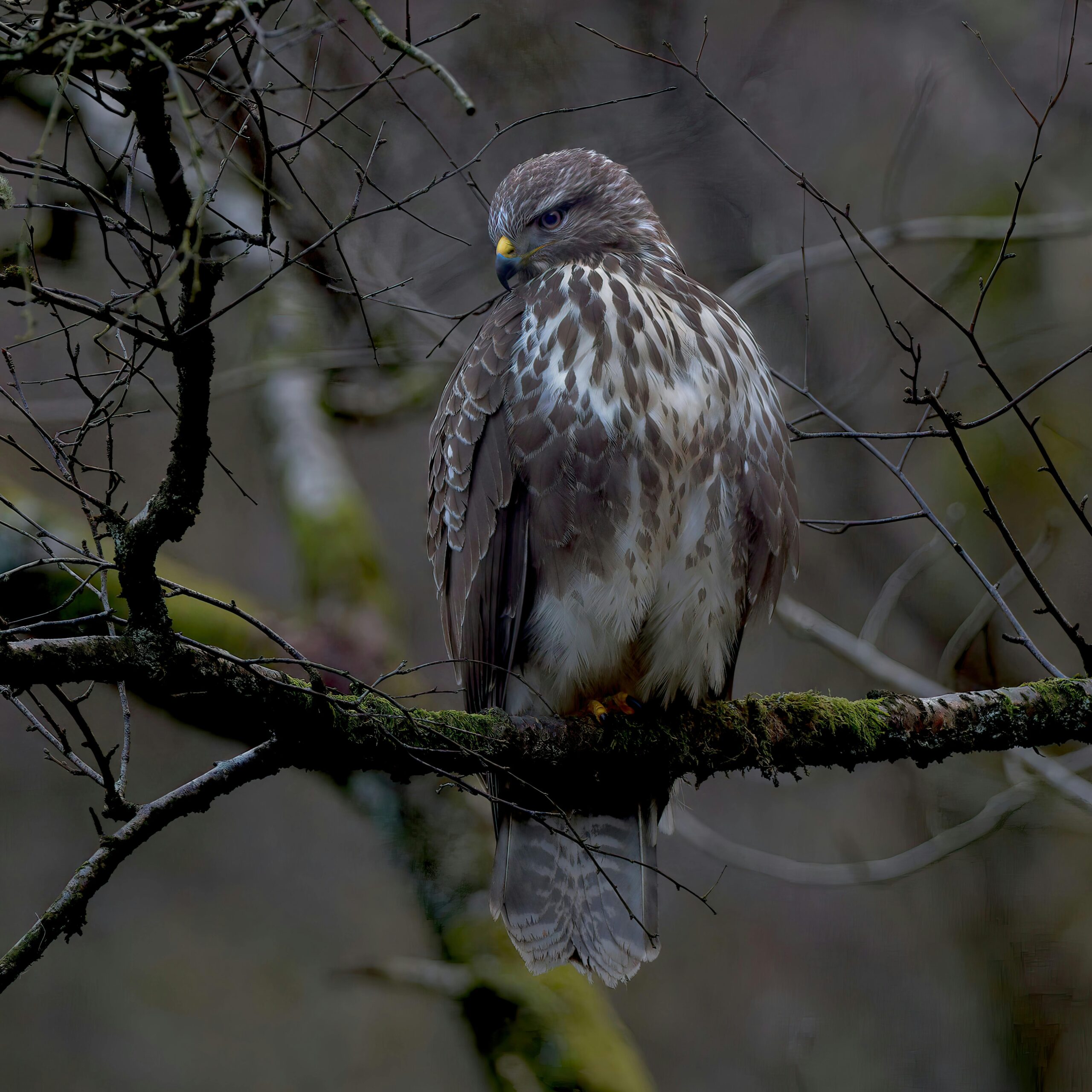Buzzards, belonging to the Buteo genus, are fascinating birds of prey known for their adaptability and wide distribution across various continents. One of the most intriguing aspects of their lives is their mating behaviour. Many bird species form long-term pair bonds, but do buzzards follow the same pattern?
In this article, we will explore whether buzzards mate for life, how they select their partners, and what factors influence their reproductive success. We will also delve into their courtship displays, nesting habits, and the challenges they face in the wild. By understanding their breeding behaviour, we gain insights into the survival strategies of these remarkable raptors.
Buzzard Mating Habits: Do They Form Lifelong Bonds?
Buzzards are known for their strong pair bonds, and in many cases, they do mate for life. Once a pair forms, they often remain together throughout multiple breeding seasons, returning to the same nesting sites year after year. This monogamous behaviour is common among many raptors, as it provides stability and increases reproductive success.
However, while some pairs stay together for life, others may separate due to territorial disputes, environmental changes, or the death of a partner. In such cases, the surviving buzzard will seek a new mate to continue breeding. The strength of a bond depends on factors like food availability, habitat stability, and individual fitness.
Factors Influencing Buzzard Pair Bonding
Several factors influence whether buzzards remain with the same mate:
- Territory Quality: A rich habitat with abundant prey encourages long-term pair bonding.
- Survival Rate: If one partner dies or fails to return during the breeding season, the remaining bird will seek a new mate.
- Breeding Success: If a pair experiences repeated nest failures, they may separate and find new partners.
- Competition and Predation: Other birds of prey or environmental pressures can disrupt pair stability.
Overall, while lifelong monogamy is common in buzzards, it is not absolute. Their mating habits are influenced by ecological conditions and survival challenges.
Breeding Season and Courtship Displays
Buzzards typically begin their breeding season in early spring, with variations depending on geographic location. In temperate regions, mating activity peaks between March and May, while in warmer climates, breeding can start earlier. The timing of reproduction is closely linked to food availability, ensuring that chicks hatch when prey is abundant.
Before mating, buzzards engage in courtship displays, which strengthen pair bonds and signal readiness for reproduction. These displays include spectacular aerial acrobatics, where males and females soar together, performing dives, spirals, and talon-grappling maneuvers. Vocalizations also play a role, with males producing high-pitched calls to attract mates and defend their territory.
Once a pair is bonded, they will select a nesting site and begin the process of raising their young.
How Buzzards Attract Their Mates
Buzzards rely on several key behaviors to attract and secure a mate:
- Aerial Displays – Males perform dramatic flight patterns, including dives and loops, to impress potential mates.
- Food Offerings – In some species, males present food to females as a sign of their ability to provide.
- Vocal Communication – Buzzards use distinct calls to communicate their presence and readiness to mate.
- Territorial Defense – A strong, well-maintained territory signals a buzzard’s suitability as a mate.
These behaviours not only ensure successful mating but also help reinforce existing pair bonds, increasing the likelihood of long-term monogamy.
Nesting Behaviour: Where and How Buzzards Raise Their Young
Once a pair of buzzards has formed a strong bond, they begin the crucial task of nest-building. Buzzards prefer to build their nests in tall trees, cliffs, or sometimes even man-made structures, depending on the available habitat. The nesting site is carefully chosen to provide safety from predators and a clear view of the surrounding territory.
Both the male and female contribute to nest construction, using sticks, leaves, and other natural materials. The nest is often reused each year, with additional layers added to strengthen the structure. In cases where their original nest is destroyed, they will quickly rebuild in the same general area.
A typical clutch size ranges from two to four eggs, with incubation lasting around 30 to 40 days. The female takes on most of the incubation duty, while the male is responsible for hunting and providing food. Once the chicks hatch, the parents work tirelessly to ensure their survival.
Parental Roles in Raising Buzzard Chicks
Buzzards exhibit strong parental care, with both parents playing distinct but essential roles:
- Male Responsibilities:
- Hunts for food and brings prey to the nest.
- Defends the nesting site from potential threats.
- Female Responsibilities:
- Primarily incubates the eggs and keeps chicks warm.
- Feeds the young with food provided by the male.
As the chicks grow, they become increasingly independent, starting to explore the nest and practice wing-flapping. After six to eight weeks, they begin their first flights, though they continue to rely on their parents for food and protection for a few more weeks.
Buzzard parents remain highly protective, ensuring their offspring have the best possible chance of survival before they become fully independent.
Challenges in Buzzard Reproduction
Despite their adaptability, buzzards face various challenges that can affect their breeding success. These threats come from both natural predators and human-related environmental changes, which can impact their nesting sites, food sources, and overall survival.
In some areas, habitat destruction forces buzzards to compete for suitable nesting locations, while climate change can disrupt prey availability. Additionally, human activities such as illegal hunting, poisoning, and road accidents pose significant risks to buzzard populations.
Predators and Environmental Threats
Buzzard reproduction is influenced by several natural and human-induced threats:
- Natural Predators
- Eagles, larger raptors, and mammals (such as foxes) may prey on buzzard eggs or chicks.
- Nesting in tall trees or cliffs helps reduce predation risks.
- Food Shortages
- A decline in small mammals, reptiles, or carrion can affect breeding success.
- Severe weather conditions may reduce prey availability.
- Human Interference
- Deforestation and urban expansion destroy natural nesting sites.
- Poisoned bait targeting other predators can unintentionally harm buzzards.
- Vehicle collisions are a frequent cause of adult buzzard fatalities.
To counter these challenges, conservation efforts focus on habitat protection, legal measures to prevent illegal hunting, and initiatives to maintain stable food sources for these birds of prey.
Conservation and the Future of Buzzard Populations
As top predators in their ecosystems, buzzards play a crucial role in maintaining ecological balance. However, their survival depends on conservation efforts that protect their habitats and mitigate human-related threats. Many organizations and wildlife protection agencies work to ensure the long-term stability of buzzard populations.
Legal protection in several countries has helped reduce illegal hunting and poisoning, but habitat loss remains a significant challenge. Conservationists focus on reforestation programs, legal protections, and awareness campaigns to safeguard these birds.
How Habitat Loss Affects Buzzard Mating Patterns
Habitat loss directly impacts buzzard mating behaviour, influencing their ability to form long-term pair bonds and successfully reproduce:
- Loss of Nesting Sites
- Deforestation and land development force buzzards to relocate, often disrupting established pairs.
- Increased competition for limited nesting sites may lead to lower breeding success.
- Food Scarcity
- Reduced availability of rodents, small birds, and carrion forces buzzards to expand their hunting range.
- Increased energy expenditure searching for food can delay or prevent mating.
- Increased Human Disturbance
- Noise pollution, agriculture, and construction activities can cause nest abandonment.
- Disturbance during courtship and incubation phases may result in failed breeding attempts.
By addressing these challenges, conservation efforts aim to create sustainable environments where buzzards can thrive, ensuring the continuation of their natural breeding behaviours.
Conclusion
Buzzards exhibit strong pair bonding, with many forming lifelong monogamous relationships. Their mating habits, courtship displays, and nesting behaviors reflect their adaptability and commitment to raising their young. While some pairs remain together for years, others may separate due to environmental pressures or the loss of a partner.
Despite their resilience, buzzards face numerous threats, including habitat loss, food scarcity, and human interference. Conservation efforts play a crucial role in ensuring their continued survival by protecting nesting sites, maintaining stable food sources, and enforcing legal protections.
Understanding the breeding behaviour of buzzards helps wildlife enthusiasts, researchers, and conservationists develop effective strategies to support these majestic birds. By preserving their habitats and reducing human-induced threats, we can contribute to the long-term stability of buzzard populations in the wild.

